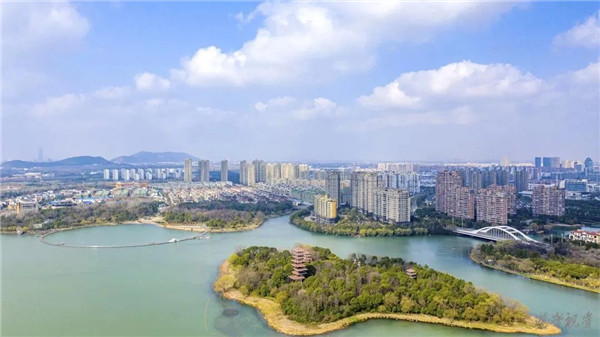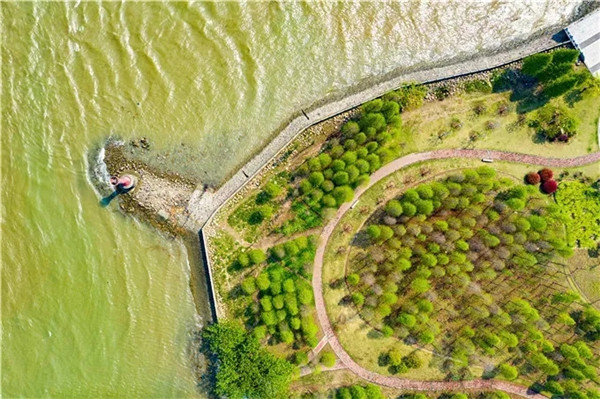Zhangjiagang sees improvement in ecological environment in 2019
( chinadaily.com.cn )
Updated: 2020-05-08
|
|||||||||
 |
|
Zhangjiagang in East China's Jiangsu province sees progress in ecological environment protection in 2019. [Photo/Official WeChat account: zjgsrmzf] |
Zhangjiagang in Jiangsu province saw progress in ecological environment protection as the quality of air and surface water improved in 2019, according to news released by the city's environmental protection authorities May 6.
The city's air quality improved as the average density of PM2.5 – fine particulate matter that causes smog – was 38.7 micrograms per cubic meter last year, and the rate of good air quality reached 78.3 percent.
According to the news report, the quality of water in all sections of the city's main tributaries last year stood above grade III, the third highest in the country's five-tier water quality system.
The local government has also carried out self-inspection of the ecological environment, and efforts have been made to rectify problems related to the ecological environment, with 95.5 percent of problems now rectified.
 |
|
A pool of green lake water and a vast plantation of lush trees form a picturesque scene and eco-friendly environment for tourists in Zhangjiagang, East China’s Jiangsu province. [Photo/Official WeChat account: zjgsrmzf] |
The city has upgraded its energy structure by cutting coal consumption. By the end 0f 2019, total coal consumption in Zhangjiagang decreased by 2.41 million metric tons compared with 2016.
Efforts were made to upgrade or remove coal-fired boilers last year, with more than 10 removed or replaced by clean energy to decrease carbon dioxide emissions.
Additionally, Zhangjiagang has been moving forward with construction of environmental infrastructure, such as building a platform to monitor air quality. Advanced technologies were also applied to complete the city's automatic monitoring network for water and air quality.
Relying on the comprehensive monitoring platform, the city has taken strict measures to act against illegal discharging of pollutants. Environmental protection authorities filed 1,017 environmentally illegal acts and 552 cases were given administrative punishments, growing by 33.3 percent and 19.7 percent year-on-year.







